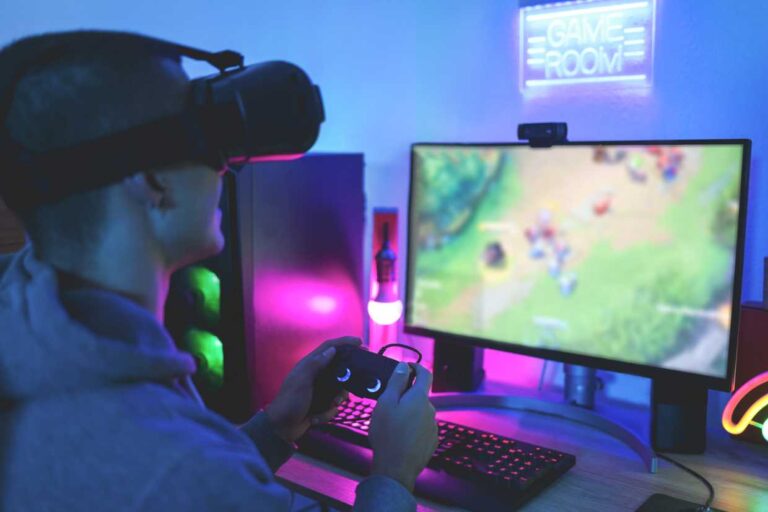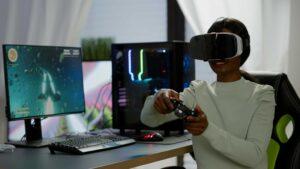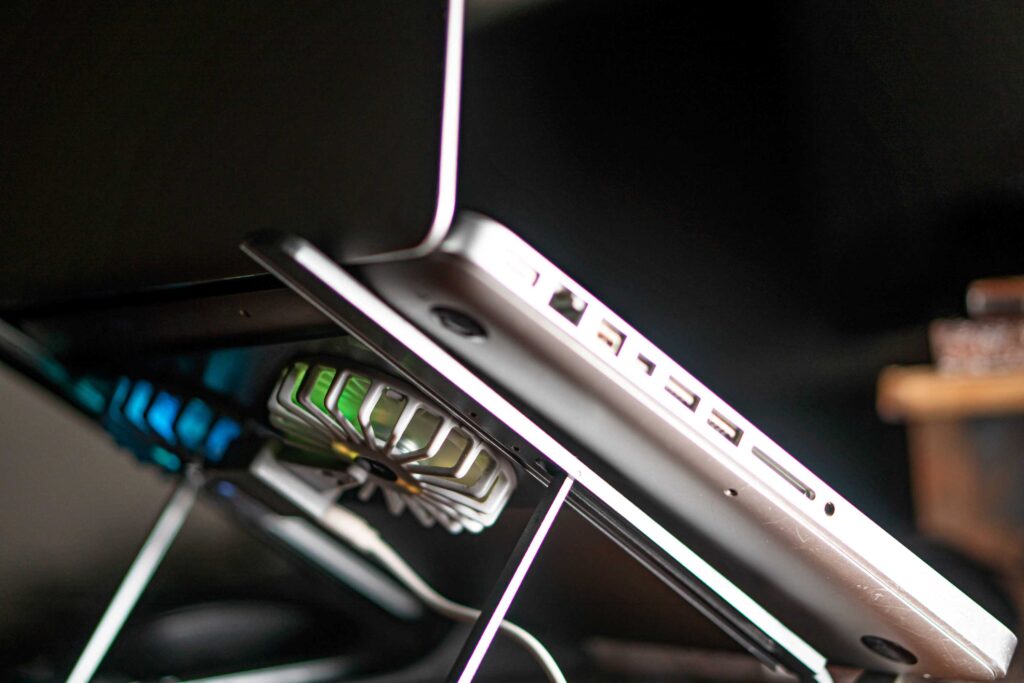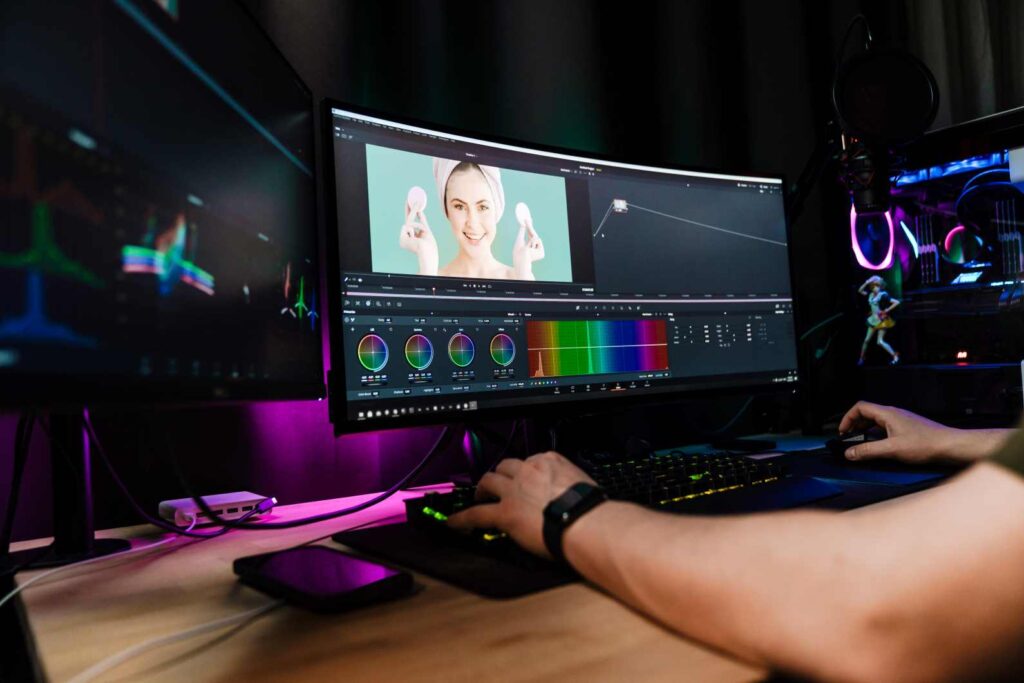How to Optimize Gaming Laptop for VR

Virtual Reality (VR) gaming offers a thrilling and immersive experience, allowing players to engage with games like never before. However, for a smooth and seamless VR experience, your gaming laptop needs to be properly optimized. If you’re using your gaming laptop for VR, it’s essential to ensure that both the hardware and software are tuned to meet the demanding nature of VR games. In this guide, we’ll walk you through the essential steps to optimize your gaming laptop for VR.
Introduction: The Challenge of VR Gaming on Laptops
Unlike desktop systems, gaming laptops often have limited space for components, making VR optimization a bit more challenging. For VR to run smoothly, your system must be able to handle higher frame rates and support the 3D environments VR demands. Read this guide on VR basics to understand what it takes to get started with VR gaming.

Understanding the Hardware Requirements for VR
To fully enjoy VR, your laptop needs to meet certain hardware standards. Let’s break down the essential components that will help you optimize your laptop for VR gaming.
The Role of the Graphics Card (GPU) in VR
A powerful GPU is the most critical component for VR performance. VR games require high frame rates (at least 90Hz), which means a dedicated GPU with enough VRAM is a must. NVIDIA’s RTX series and AMD’s RX series are known for their exceptional VR performance. If your laptop is equipped with something like the NVIDIA GTX 1060, it might be time for an upgrade.
External Link Suggestion: For more on selecting the best GPU for VR, read PCMag’s guide for in-depth GPU recommendations.
CPU and RAM Considerations for VR
Your laptop’s CPU and RAM also play a vital role in VR gaming. A multi-core processor with a clock speed of 3.0 GHz or greater is what you want for your CPU. For a smoother experience, ensure your laptop has at least 16GB of RAM. Insufficient RAM can result in lag and stuttering, affecting your overall VR experience.
Internal Link Suggestion: To dive deeper into how your CPU affects gaming performance, check out our article on Optimizing Your Laptop’s CPU for Gaming.
Storage and VR Gaming: SSD vs HDD
For VR gaming, storage speed is just as important as processing power. While HDDs are cheaper, SSDs (Solid State Drives) are far superior for VR because they offer much faster read and write speeds, leading to faster load times and smoother gameplay. Consider upgrading your laptop’s storage to an SSD if it’s still using an HDD.
Configuring VR Settings for Better Performance
Once you have the hardware in place, optimizing your settings can make a huge difference in your VR experience. Adjusting these settings correctly will ensure smoother gameplay and prevent lag or stuttering.
Adjusting Resolution and Refresh Rate for VR
VR headsets typically run at a refresh rate of 90Hz or higher, which is essential for a smooth visual experience. If you’re facing performance issues, try lowering the resolution or adjusting the refresh rate to balance between performance and visual fidelity. This will help reduce stuttering and improve overall experience.
External Link Suggestion: To learn more about adjusting resolution and refresh rate settings in VR, visit this SteamVR Setup Guide.
Setting Up VR Software for Optimal Performance
It’s not just about the hardware; proper software setup is equally crucial. Make sure your VR software is set up correctly so it works at its best. Whether you’re using SteamVR, Oculus, or Windows Mixed Reality, the right settings can optimize the VR experience. Always ensure that your VR software is updated to the latest version to take advantage of new features and compatibility.
Updating Drivers and System Software
Regular updates are key to maintaining VR performance. Outdated drivers can cause your VR experience to lag, crash, or even malfunction. Keeping your system and drivers up-to-date ensures that everything runs smoothly.
GPU and VR Headset Driver Updates
Updating your GPU drivers is one of the most effective ways to optimize your VR gaming experience. Both NVIDIA and AMD provide software tools that check for and automatically install the latest drivers. Additionally, don’t forget to update your VR headset’s firmware for optimal compatibility.
Internal Link Suggestion: Need help with driver updates? Check out our detailed guide to updating your GPU drivers.
BIOS and Firmware Updates for Improved Performance
Updating your laptop’s BIOS and firmware might not be something you do regularly, but it can improve system stability and enhance VR performance. Some updates address issues like thermal management or memory allocation, which can be crucial for VR gaming.
Using Performance Boosting Utilities
In addition to hardware and software adjustments, there are performance-boosting utilities that can help optimize your system for VR. These programs can automatically change your settings to make VR work better, which will make your experience smoother.
VR Performance Boosting Software
If you’re using an NVIDIA GPU, tools like GeForce Experience automatically adjust the settings for VR games. For AMD users, the Radeon Software suite offers similar tools for optimizing performance. These utilities are designed to take the guesswork out of VR optimization by automatically adjusting settings for you.
External Link Suggestion: Learn more about using GeForce Experience for VR optimization.
Task Manager and Resource Management
To ensure that VR gaming gets all the system resources it needs, you should monitor and manage background applications using Task Manager. Closing unnecessary programs can free up processing power, allowing your VR games to run more efficiently.
Cooling and Power Management
VR gaming pushes your gaming laptop to its limits, which can cause it to heat up quickly. Proper cooling and power management are essential to maintain performance and avoid overheating.
Cooling Solutions for VR Gaming
When it’s too hot, throttling can happen, which slows down your laptop. Using a cooling pad or external fan can help maintain optimal temperatures during VR gaming. Regularly cleaning your laptop’s vents and ensuring that dust doesn’t clog up the cooling system is also important for maintaining performance.

Power Management for Longer Sessions
While VR gaming drains the battery quickly, it’s best to keep your laptop plugged in during extended VR sessions. You can adjust your laptop’s power settings to prioritize performance over battery life, ensuring a smoother experience during long gaming sessions.
Testing and Troubleshooting VR Performance
After optimizing your laptop for VR, it’s important to test it to make sure everything is functioning correctly. You may run into some common performance issues that can be resolved with a few simple tweaks.
Common VR Performance Issues and Solutions
Lag, stuttering, or low frame rates are common in VR gaming. If you experience these issues, try lowering the resolution or refresh rate, updating your drivers, or closing unnecessary background applications. Running diagnostic software can help pinpoint the issue.
Troubleshooting Tips for VR Gaming
If you’re having issues playing VR, try these steps to fix the problem:
- Restart your laptop and VR system to resolve temporary issues.
- Ensure your drivers are up to date.
- Close any unnecessary apps that may be consuming system resources.
- Lower the graphics settings in your VR game to improve performance.
Internal Link Suggestion: Check out our troubleshooting guide for common gaming issues.
Conclusion: Ready to Immerse Yourself in VR?
Optimizing your gaming laptop for VR doesn’t have to be difficult. By upgrading your hardware, fine-tuning settings, and keeping everything updated, you can enjoy a smooth and immersive VR experience. These optimizations will make sure that your system is ready to handle any VR game, providing you with the best possible performance.
If you’re looking for additional VR tips and tricks, be sure to check out our complete guide on setting up a VR headset.
